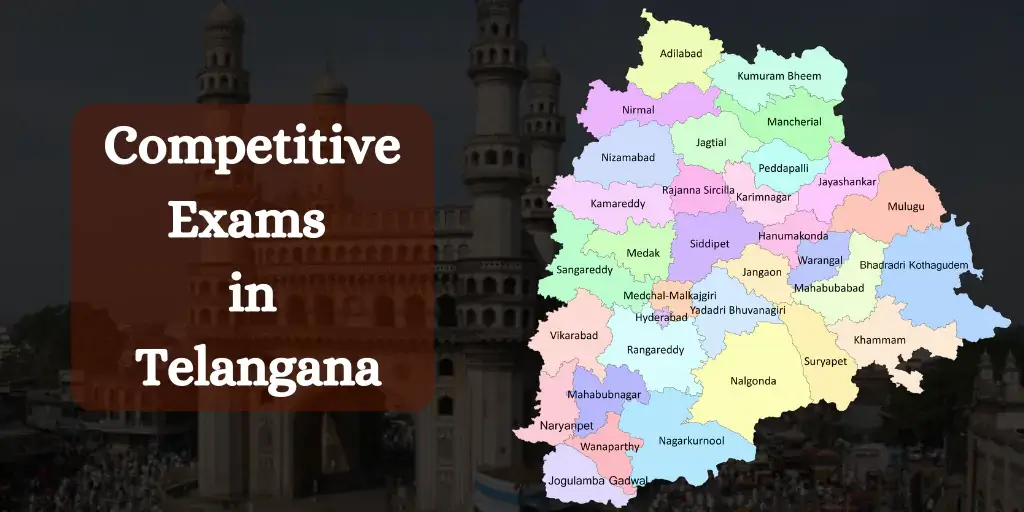Amid British colonial expansion in India, the Anglo-Mysore Wars stood out as a major resistance movement, led by Hyder Ali, an illiterate yet brilliant strategist who rose from modest origins to become the de facto ruler of Mysore. His leadership transformed Mysore into a formidable power through revolutionary tactics like the use of iron-cased rockets. From nearly capturing Madras to defeating British forces at Pollilur and Kumbakonam, Hyder’s military genius repeatedly challenged British dominance. This blog explores his rise, innovations, key battles, and the powerful legacy he left behind, later continued by his son, Tipu Sultan. This blog is important for UPSC and Competitive exams.
1. Early Life and Rise to Power

A. Birth and Family Background
- Place and Year of Birth:
- Hyder Ali was born around the year 1720 in Budikote, located in present-day Karnataka.
- Father’s Identity and Profession:
- His father, Fath Muhammad, served as a military commander.
- Ancestry and Origins:
- The exact origin of Hyder Ali’s ancestry is disputed.
- Some theories suggest Arab lineage, while others point to Punjabi roots.
- Early Traits and Capabilities:
- Although illiterate, Hyder Ali showed exceptional leadership skills from an early age.
B. Military Career and Rise to Dalavayi (Commander-in-Chief)
- Initial Military Command:
- In 1749, Hyder Ali gained independent military command in Mysore.
- Adaptation of European Tactics:
- He closely studied French military strategies to enhance his approach to warfare.
- Rise to Dalavayi:
- Due to his growing military success, he was appointed Dalavayi (commander-in-chief) under the Wodeyar dynasty.
- Control over the Mysore Government:
- By 1761, after overthrowing the prime minister, Hyder effectively took control of the Mysore administration.
C. Seizure of Power from the Wodeyar Dynasty
- Political Consolidation:
- After becoming Dalavayi, Hyder consolidated political power, sidelining Krishnaraja Wodeyar II, who became a figurehead monarch.
- Territorial Expansion:
- He expanded Mysore’s territory through successful conquests in Malabar and against the Marathas.
- Administrative and Financial Reforms:
- Hyder’s effective administration and financial management helped solidify his position as the de facto ruler of Mysore.
- Path Toward Modernisation:
- Once in power, Hyder shifted focus toward modernising the military and introducing tactical innovations.
2. Military Innovations and Leadership

Having risen to power and established himself as the de facto ruler of Mysore, Hyder Ali revolutionised his military capabilities despite his illiteracy. His strategic brilliance and military innovations transformed Mysore into a formidable power that could challenge European adversaries, particularly the British East India Company.
As Hyder consolidated his authority as Dalavayi, he focused on military advancements that would prove crucial in the approaching conflicts. These innovations would soon be tested in the First Anglo-Mysore War, where his modernised forces would demonstrate their effectiveness against colonial powers.
A. Development of the Mysorean Rockets
- Pioneering Military Innovation:
- Hyder Ali developed the first successful iron-cased rocket weapons, a breakthrough in military technology.
- Design and Specifications:
- Rockets measured between 200mm to 1,000mm in length, with diameters ranging from 38mm to 76mm.
- They achieved ranges up to 2 kilometres, far superior to European rockets of the time.
- Propulsion and Effectiveness:
- Powered by black powder, these rockets caused devastating damage in battles.
- Key Battlefield Success:
- Played a critical role in the Battle of Pollilur (1780) during the Anglo-Mysore Wars, where they outperformed British forces.
B. Artillery Improvements and French Alliance
- Strategic Diplomacy with the French:
- Hyder formed a military alliance with the French, seeking technical support despite having no formal education.
- European Influence on Artillery:
- The French introduced European artillery techniques, enhancing Mysore’s firepower and accuracy.
- Balanced Military Strength:
- These improvements, combined with indigenous innovations like the rocket corps, helped form a modern and effective army.
C. Administrative and Financial Reforms
- Strong Governance Foundation:
- Hyder Ali’s military campaigns were supported by his keen administrative and financial skills.
- Efficient Resource Management:
- Though not extensively recorded, his organisational abilities ensured the supply of resources, maintained troop morale, and funded continuous military expansion.
- Power Consolidation:
- His administrative efficiency played a vital role in consolidating power and ensuring governance stability amidst constant warfare.
3. The First Anglo-Mysore War (1767-1769)

Having leveraged his military innovations and leadership skills, Hyder Ali faced his first major conflict with the British East India Company in the First Anglo-Mysore War (1767-1769). This war emerged from complex power dynamics in South India, with the Nizam of Hyderabad and Marathas initially opposing Mysore.
A. Initial Military Successes
- Facing a Powerful Coalition:
- Hyder Ali confronted a formidable alliance of the British, the Nizam of Hyderabad, and the Marathas.
- Tactical Victories:
- Captured Kaveripattinam and besieged several British outposts, despite being outnumbered.
- Diplomatic Manoeuvring:
- Paid off the Marathas, effectively neutralising them as a threat.
- Successfully divided the enemy alliance, leading to the Nizam’s withdrawal of support for the British.
B. Near Capture of Madras
- Strategic Regrouping:
- After initial British advances, Hyder regrouped his forces and prepared a counterattack.
- Siege of Madras (1768):
- Launched a bold offensive, advancing to the gates of Madras, the British administrative stronghold.
- Impact of the Siege:
- The threat to Madras forced the British to initiate peace talks, fearing loss of control in South India.
C. Treaty of Madras and Its Outcomes
- Date and Terms:
- Signed on April 4, 1769, the Treaty of Madras included:
- Restoration of all conquered territories to their pre-war rulers
- A mutual defence agreement against future foreign invasions
- Signed on April 4, 1769, the Treaty of Madras included:
- Immediate Impact:
- Temporarily ended hostilities and checked Hyder Ali’s territorial ambitions.
- British Betrayal:
- In 1771, during a Maratha invasion, the British failed to uphold the mutual defence pact.
- This breach of trust provoked Hyder Ali, laying the groundwork for the Second Anglo-Mysore War.
4. The Second Anglo-Mysore War (1780-1784)

Having successfully stalled British advances in the First Anglo-Mysore Battle, Hyder Ali faced renewed conflict when the British captured the French port of Mahé in 1779. This provocation led to the Second Anglo-Mysore War (1780-1784), where Hyder Ali demonstrated his military prowess against colonial forces.
A. Major Victories at Pollilur and Kumbakonam
- Battle of Pollilur (1780):
- Hyder Ali achieved a crushing victory, inflicting heavy losses on the British forces.
- This battle highlighted his tactical brilliance and the effectiveness of Mysorean rockets and other military innovations.
- Battle of Kumbakonam:
- Following Pollilur, Hyder secured another key victory, further weakening British influence in the region.
- These successive wins established Hyder Ali as a formidable adversary to the British East India Company.
B. Strategic Challenges and Military Campaigns
- Involvement of European Powers:
- French and Dutch forces allied with Mysore, complicating the geopolitical situation.
- Hyder leveraged these alliances to pressurise British positions across South India.
- British Recovery and Resistance:
- With naval reinforcements and superior logistics, the British began to reclaim lost territory.
- The war became a strategic tug-of-war, testing Hyder’s adaptability and military endurance.
C. Treaty of Mangalore and Territorial Arrangements
- Transition of Leadership:
- After Hyder Ali died in 1782, his son Tipu Sultan took over the Mysorean resistance.
- French Withdrawal and Changing Dynamics:
- With the Anglo-French peace agreement in 1783, French support for Mysore ended, weakening its position.
- Treaty of Mangalore (1784):
- The treaty restored all captured territories to their original owners.
- Notably, this was the last treaty in Indian history where an Indian power dictated terms to the British East India Company.
5. Legacy and Death

Having fought fiercely during the Second Anglo-Mysore Battle, Hyder Ali left an indelible mark on southern India’s history. His military campaigns significantly expanded Mysore’s territory from the Krishna River to the Arabian Sea, establishing it as a formidable power in the region.
A. Expansion of Mysore’s Territory
- Territorial Growth Under Hyder Ali:
- Successfully expanded Mysore’s borders through strategic military campaigns.
- Conquests included Malabar and regions formerly controlled by the Marathas.
- Role of Military Innovations:
- Hyder’s modern military tactics and technological advancements (e.g., Mysorean rockets) played a key role.
- These innovations helped transform Mysore into a dominant power in southern India.
B. Death from Cancer in 1782
- End of a Remarkable Career:
- Died on December 7, 1782, during the Second Anglo-Mysore War.
- The cause of death was cancer, though he continued military operations until shortly before his death.
- Final Days in Conflict:
- Despite illness, Hyder remained committed to resisting British expansion, showcasing his determination and leadership.
C. Succession by Tipu Sultan and Long-term Impact
- Leadership Transition:
- Hyder Ali was succeeded by his son, Tipu Sultan, who took over Mysore’s military and political leadership.
- Continued Resistance and Legacy:
- Tipu expanded upon his father’s military strategies and innovations.
- Continued to resist British domination until he died in 1799, after which the Mysore Sultanate declined.
- Enduring Influence:
- Hyder Ali’s legacy lived on through Tipu Sultan’s reign, and their joint resistance remains a symbol of early anti-colonial struggle in Indian history.
Conclusion
Hyder Ali’s remarkable journey from a military commander to the de facto ruler of Mysore represents one of the most significant challenges to British colonial expansion in India. His military innovations, particularly the development of Mysorean rockets, and his strategic alliances with the French demonstrated his foresight in warfare. Though the First Anglo-Mysore War ended with the status quo restored, and despite his impressive victories during the Second Anglo-Mysore War, Hyder’s death in 1782 from cancer marked the beginning of the end for independent Mysore.
The legacy of Hyder Ali extends far beyond his military campaigns. His administrative skills and financial management transformed Mysore into a formidable power in southern India. While illiterate, his political acumen and diplomatic manoeuvring against colonial powers established a foundation that his son Tipu Sultan would build upon. Hyder’s resistance against British expansion delayed their control over southern India and influenced military technology that would later be adopted by European powers. His life and struggles remain a testament to indigenous resistance against colonial domination in pre-independent India.






